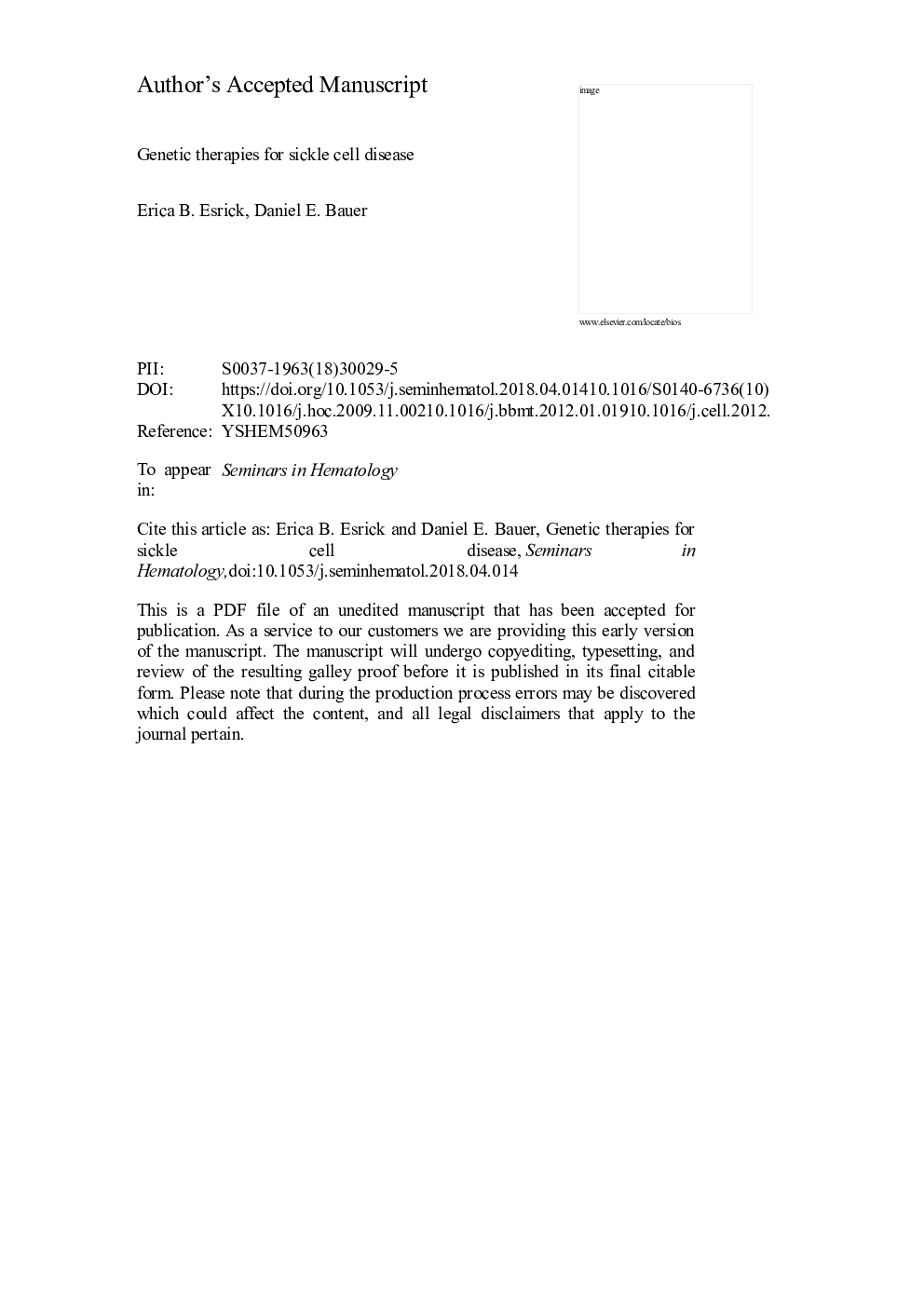| Article ID | Journal | Published Year | Pages | File Type |
|---|---|---|---|---|
| 8734792 | Seminars in Hematology | 2018 | 23 Pages |
Abstract
After decades with few novel therapeutic options for sickle cell disease (SCD), autologous hematopoietic stem cell (HSC) based genetic therapies including lentiviral gene therapy (GT), and genome editing (GE) now appear imminent. Lentiviral GT has advanced considerably in the past decade with promising clinical trial results in multiple disorders. For β-hemoglobinopathies, GT strategies of gene addition and fetal hemoglobin induction through BCL11A regulation are both being evaluated in open clinical trials. GE techniques offer the possibility of a nonviral curative approach, either through sickle hemoglobin mutation repair or fetal hemoglobin elevation. Although GE currently remains at the preclinical stage, multiple clinical trials will likely open soon. In addition to reviewing current strategies for GT and GE, this review highlights important next steps toward optimization of these therapies. All autologous cell-based genetic therapies rely on safely obtaining an adequate yield of autologous HSCs for genetic modification and transplantation. HSC collection is uniquely challenging in SCD. Peripheral mobilization with plerixafor has recently emerged as a promising approach. The acute and long-term toxicities associated with myeloablative conditioning are risks that may not be acceptable to a significant number of SCD patients, highlighting the need for novel conditioning regimens. Finally, increasing availability of autologous genetic therapies will require comprehensive and collaborative discussions regarding cost and access for SCD patients, at individual centers and worldwide.
Related Topics
Health Sciences
Medicine and Dentistry
Hematology
Authors
Erica B. Esrick, Daniel E. Bauer,
